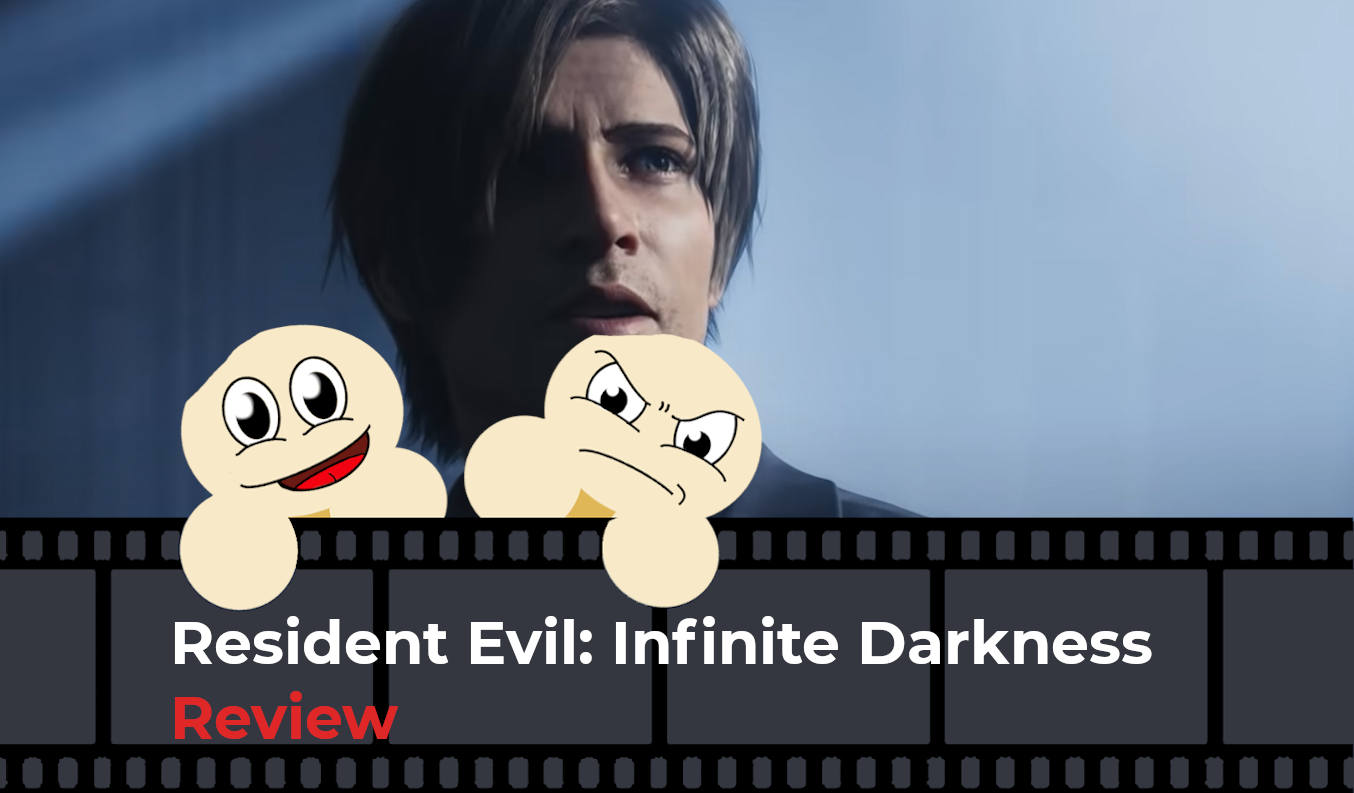House of Zombies?
Introduction
Resident Evil is a celebrated two-decade-old horror franchise that has moved past its humble roots and spawned many adaptions on different media platforms. Capcom has taken its favourite undead cash cow to many unconventional places and produced fascinating and somewhat questionable results over the years. Now Capcom and Netflix have gotten together to create a new CGI animated series called “Resident Evil: Infinite Darkness”, with Stephanie Panisello and Nick Apostolides reprising their roles of Claire Redfield and Leon S Kennedy.
Despite its emphasis on realism and its blatant use of photorealistic CGI, Resident Evil: Infinite Darkness is classified as an anime as it was made in Japan. TMS Entertainment, who are best known for their work on Resident Evil Vendetta and Dr Stone, are the folks behind its animation, with Eiichirō Hasumi (Assassination Classroom movie) as director.
Plot and Setting
Set between the fourth and fifth mainline games, Infinite Darkness follows Leon and Claire as they uncover a government conspiracy of frightening proportions following a deadly attack on the White House.
For the most part, Leon is the main character for this narrative, with Claire being more of a support player. Although Claire does get her own subplot surrounding a zombie outbreak in the fictional country of Penamstan.
As a series, Infinite Darkness takes several elements from the games, making it the closest thing to capturing their essence. They even manage to include puzzle-solving, and item investigation, two of Resident Evil’s core gameplay mechanics, which fit fluidly into the narrative.
The opening episode starts out strong with a flashback from the newcomer Jason and his unit the Mad Dogs, disobeying a direct order from the secretary of defence to go on a daring rescue mission to save a pinned downed squad. The episode then jumps to the present-day where Leon and Jason’s unit is assigned to protect the President from a zombie outbreak within the White House.
While the show does have many stand out moments, it does not reach the same high standard set by the first episode. The series does follow a different flow to the games, but in the end, it still culminates in a deathmatch with some hulked out freak of nature in some random secret laboratory. You would think they would have learned their lesson by now.
Taking a page from South Korea’s Kingdom, Infinite Darkness manages to blend elements of action horror into its political thriller, using aspects of previous games and movies to create the political backdrop. There are even discussions about whether the public should know about the United States involvement surrounding the events of Raccoon City from the original trilogy. Despite the series’ newfound maturity, there is still that same level of fun-loving craziness where a man can launch a zombie from a chandelier with a kick.
While the series still follows the franchise’s trademark craziness, it also manages to conjure up a fascinating mystery regarding the origins of this new outbreak. It also delves into some espionage, with Leon travelling to China to search for clues regarding the recent attack.
Despite the franchise finding its place with different infections and bioweapons, Infinite Darkness stays true to the tried and tested formula of using zombies to solve everyone’s problems. As a fan, it would be exciting to have Capcom mix things up with some franchise favourites like Hunters or the Ganados.
Characters and Performances
If there is one thing working against the series, it would have to be the script, The character of Jason (Ray Chase), particularly, sounds like a complete broken record going on and on about fear and terror. One can understand the writers’ effort to make the character sound intimidating with some flashy dialogue, but he comes off as a Saturday morning cartoon villain.
Stephanie Panisello’s performance as Claire Redfield is simply brilliant as she flaunts her charisma throughout the series. The problem with her is that she has been relegated to a side character so that Nick Apostolides can say more cheesy one-liners.
Speaking of Leon, as mentioned before in my Resident Evil 2 review, Nick Apostolides sounds a lot closer to Leon’s original voice actor, the late Paul Haddad with his more youthful tones, than the more mature voice of Paul Mercier from Resident Evil 4. This can come as a bit jarring for anyone who has only played games past the first trilogy.
Some of the side characters did stand out amongst the crowd, particularly Chief of Staff Ryan (Doug Stone), who at times manages to upstage even the president himself. Then there is Patrick (Billy Kametz), a rookie federal agent who is clearly not being paid enough to handle zombies.
Animation and presentation
The characters look very similar to their traditional in-game appearances, with Leon and Claire resembling their classic models rather than those of the Resident Evil 2 remake.
Capcom doubled down on the facial animation, with Claire probably being one of the most expressive characters in the show. There is one scene in particular where Claire is ignored by the Chief of Staff, and she actually looks visibly stunned and insulted. One can see this was a simpler time before the Redfield lineage was something to be feared for its boulder punching potential. Leon mainly stays serious throughout, with only a couple of exceptions such as a few smirks while talking to the ladies, most notably the Asian ones.
Conclusion
If you are a fan waiting for more Resident Evil content, I suggest giving this series a try. It is short enough to function as a film with its four-episode season, each episode running for about twenty minutes.
The best part of the series is that the franchise’s most prominent characters get a chance to shine without some random stand-in hogging all the glory like those Live-Action movies directed by Paul. W.S Anderson, starring his hot wife.
